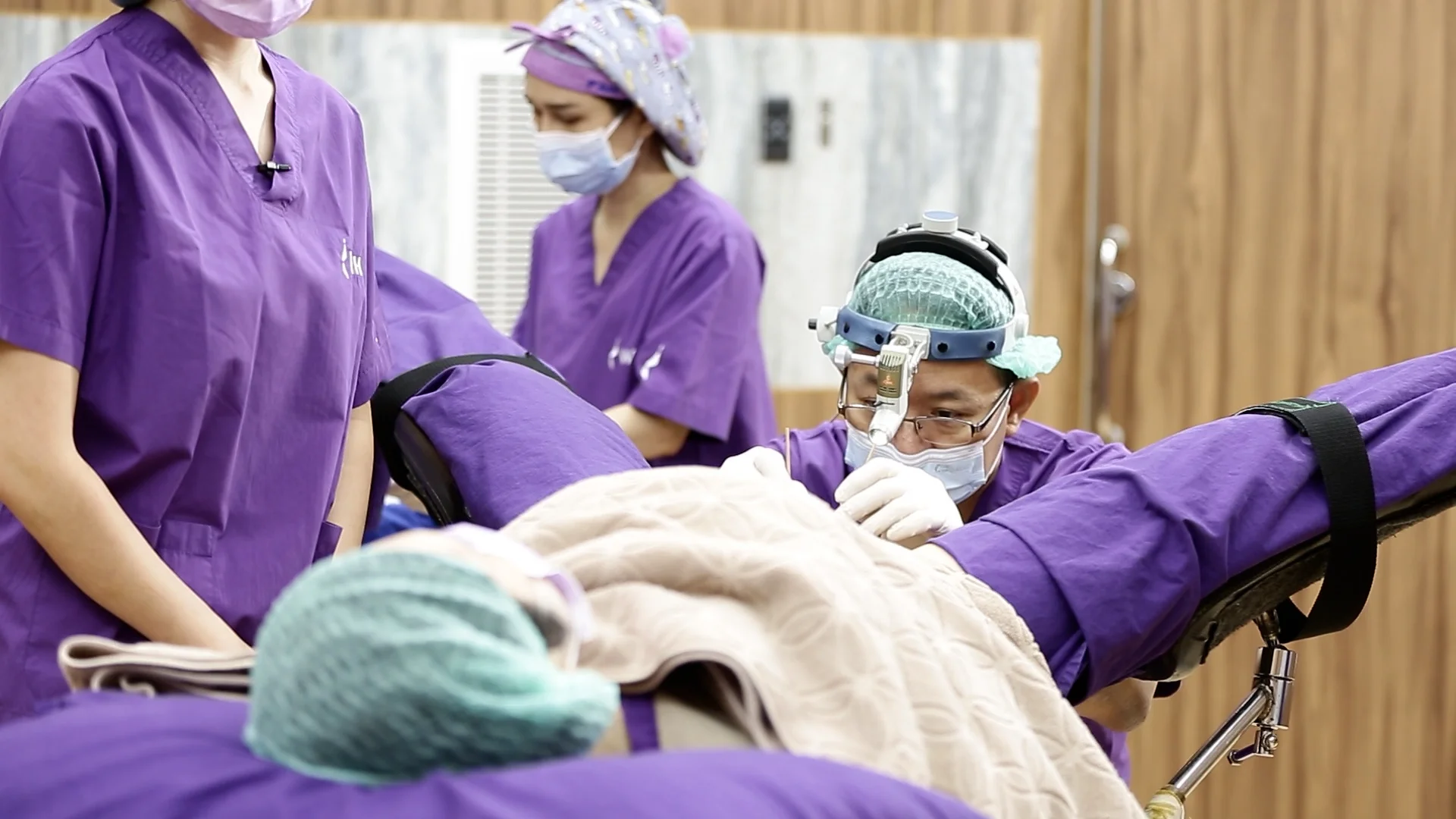Clitoris
This is the vulva’s most sensitive, or erogenous, zone. The clitoris is placed underneath the clitoral hood and designed to bend anteriorly away from the pubis, as is the natural alignment in a biological woman. The clitoris is made from the most sensitive part of the glans penis that transmits erotic sensation from the innervation of the dorsal nerve of the clitoris.
Inner Labia
The inner labia, also known as the labia minora, are a pair of small, delicate, and elongated folds of skin located within the outer labia (labia majora) of the female genitalia. They are on either side of the vaginal opening and enclose the clitoral hood and clitoris. The appearance of the inner labia can vary widely from person to person, and there is a natural diversity in size, shape, color, and texture. The length and size of the inner labia can vary depending on the condition of the foreskin, which is different between circumcised and uncircumcised patients.
Dr. Chettasak uses a part of the foreskin (prepuce) for the inner side, which is labeled A, and the penile skin for the outer side, which is labeled C, to form the lip-like appearance of the inner labia. The constructed inner labia have a lot of sensory nerve endings, which contribute to sexual pleasure. The coloration of the inner labia can be light pink for those who have originally pink penile foreskin (prepuce).
Outer Labia
The outer labia, or labia majora, are the two folds protecting the urethral and vaginal opening. This is usually fleshy and has fat tissue underneath. This part is made of the skin from the scrotum.
Urethral Opening
The urethral opening is positioned just above the vaginal opening, allowing the usual urination pattern. The total removal of surrounding spongy tissue called corpus spongiosum is an essential step during urethral opening reconstruction to prevent the engorgement of the tissue under the urethra during sexual arousal.
The bulging under the urethral opening from either the remnant corpus spongiosum or the fold of inverted penile skin (from the traditional penile inversion technique) compromises the aesthetic look of the vulva. It may cause a narrowing of the vaginal opening.
Vaginal Opening
The vaginal introitus (vaginal entrance) is the entrance to the vagina, encompassing the distal end of the penile skin flap, which is labeled C as the bilateral side wall, and the perineal skin flap, which is labeled D as the floor of the vaginal entrance.
Dr. Chettasak emphasizes that the form of the reconstructed vaginal opening must have a vertical orientation, similar to the shape of a cis female’s vaginal opening.
Posterior Fourchette
The posterior fourchette is a small fold of skin where the labia minora converge at the back of the vaginal opening. Its appearance may vary from person to person. Dr. Chettawut’s innovative non-penile inversion technique plays an important role in creating a neovagina with a naturally formed posterior fourchette in the one-step construction of primary gender affirming surgery, which depends on the individual patient’s skin conditions.
Skin Graft Preparation
The preparation process of the skin graft is delicate and ensures the removal of all hair follicles to maintain a hairless vaginal lining. Dr. Chettawut converts donor skin from the scrotum and groin into intermediate-thickness grafts, preserving the superficial dermal layer while discarding the deep part containing hair roots.
Hairless Guarantee
The prepared skin graft is double-checked under light illumination, and any remaining hair follicles are meticulously extracted before the graft is inserted into the newly constructed vagina.
Ensuring Vaginal Depth
The length of the tubed graft is carefully calculated to match the desired vaginal depth, typically 6.5-7 inches, which is the average depth achieved by Dr. Chettasak’s non-penile inversion technique.
Vaginal Packing and Stabilization
The vaginal packing stabilizes the graft for 6-7 days, allowing proper vascularization. Post-packing, the vaginal dilation routine begins under nurse supervision to ensure the graft’s durability and secure adhesion to surrounding tissues.






